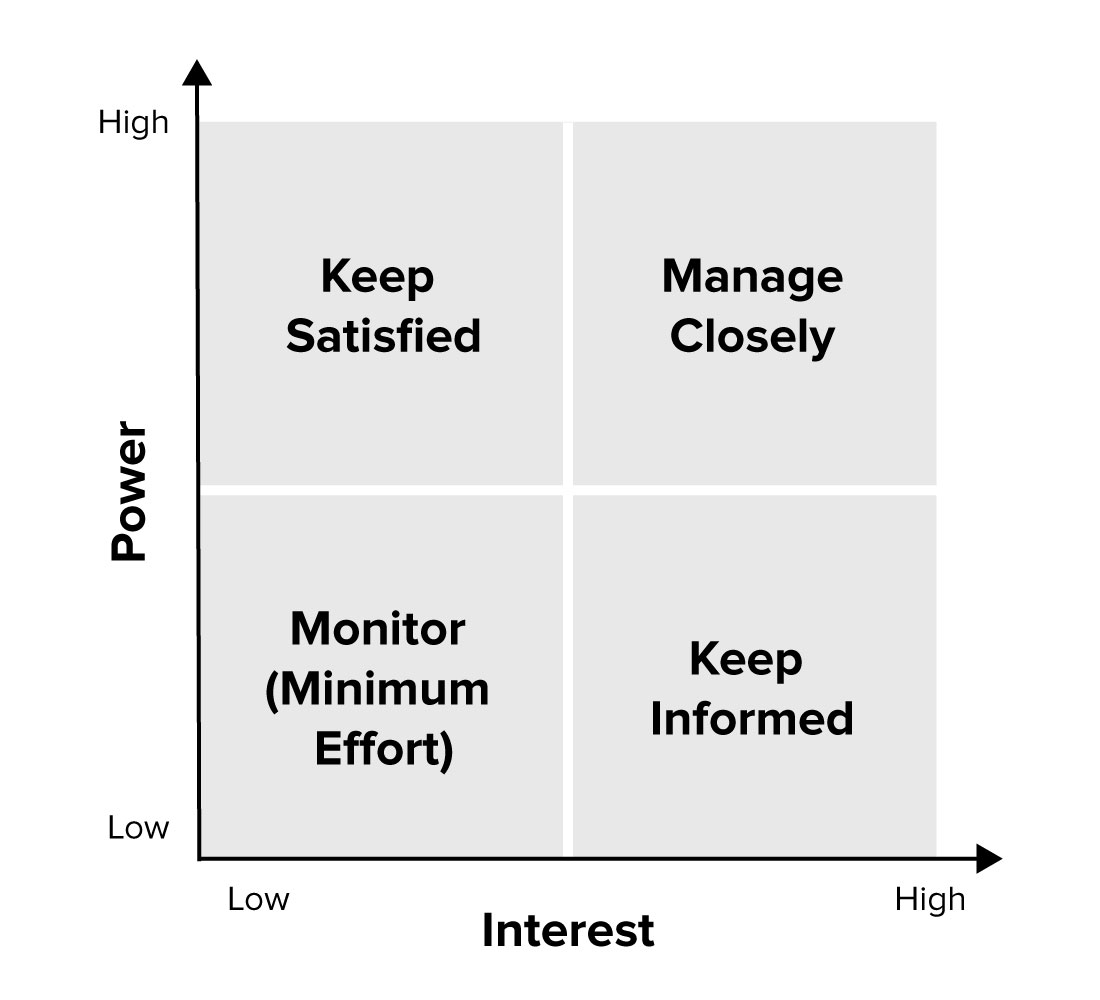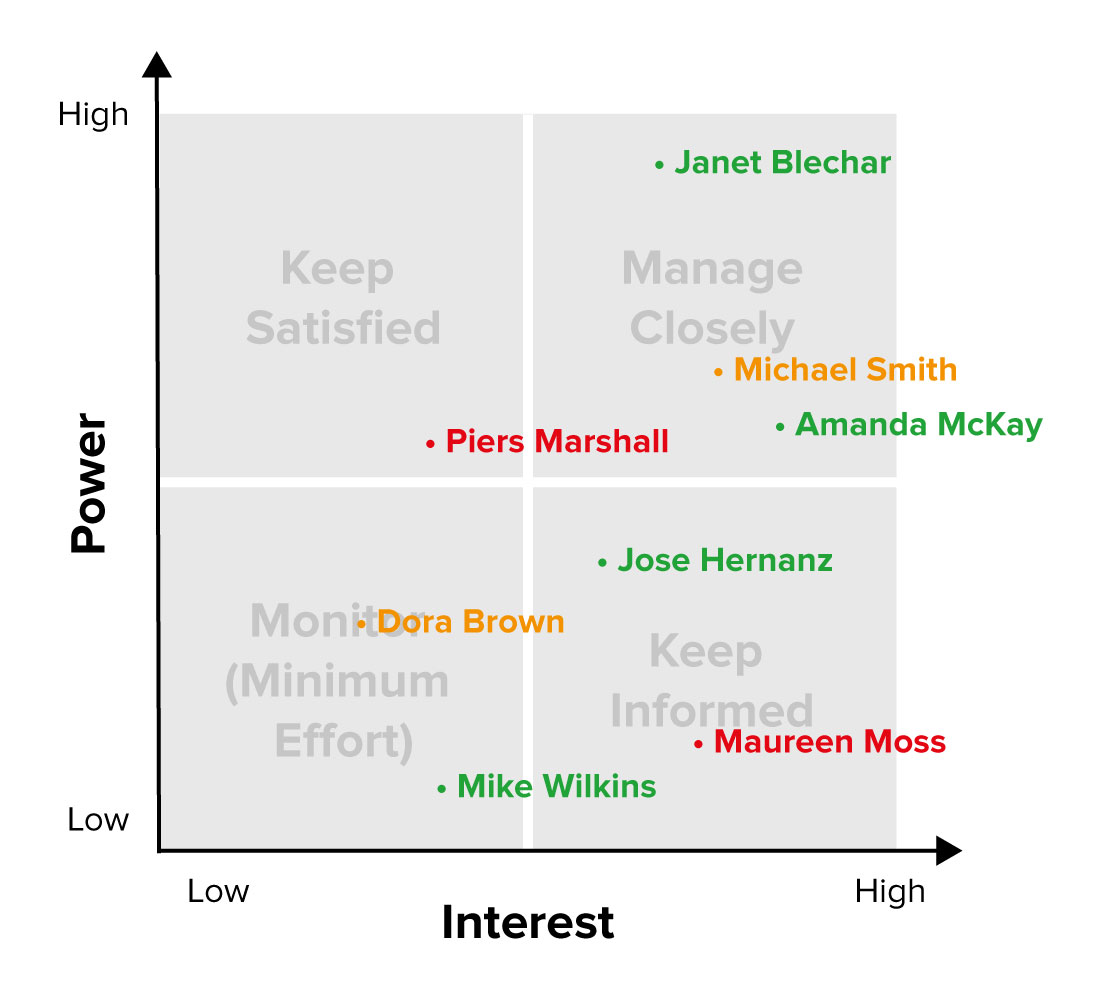Stakeholder Analysis
Winning Support for Your Projects
Try this out in our Interactive Screen App!
Stakeholder Analysis is the first step in Stakeholder Management, an important process that successful people use to win support from others.
Managing stakeholders can help you, too, to ensure that your projects succeed where others might fail. In this article and video, we'll look at that crucial first step – Stakeholder Analysis – in more detail. Then you can move on to our next article to plan your stakeholder communications.
Why Is Stakeholder Management Important?
As your career develops, and you become more successful, the actions that you take start to affect more and more people. And the more people you affect, the more likely it is that some of them will have significant power and influence over your work.
These people are your stakeholders. They could be strong supporters of your projects – or they could block them, so you need to identify who your stakeholders are and win them over as soon as possible.
You can do this by conducting a Stakeholder Analysis – an effective three-step process for identifying, prioritizing and understanding your stakeholders.
Click here to view a transcript of our Stakeholder Analysis video.
Why Use Stakeholder Analysis?
A stakeholder-based approach gives you four key benefits:
1. Getting Your Projects Into Shape
You can use the opinions of your most powerful stakeholders to help define your projects at an early stage. These stakeholders will then more likely support you, and their input can also improve the quality of your project.
2. Winning Resources
Gaining support from powerful stakeholders can help you to win more resources, such as people, time or money. This makes it more likely that your projects will be successful.
3. Building Understanding
By communicating with your stakeholders early and often, you can ensure that they fully grasp what you’re doing and understand the benefits of your project. This means that they can more actively support you when necessary.
4. Getting Ahead of the Game
Understanding your stakeholders means that you can anticipate and predict their reactions to your project as it develops. This allows you to plan actions that will more likely win their support.
How to Conduct a Stakeholder Analysis
There are three steps to follow in Stakeholder Analysis. First, identify who your stakeholders are. Next, work out their power, influence and interest, so that you know who you should focus on. Finally, develop a good understanding of the most important stakeholders, so that you know how they are likely to respond, and how you can win their support.
When you’ve completed your analysis, you can move on to use stakeholder management to work out how you’ll communicate with each stakeholder.
Let’s explore the three steps of Stakeholder Analysis in more detail:
1. Identify Your Stakeholders
Start by brainstorming who your stakeholders are. As part of this, think of all the people who are affected by your work, who have influence or power over it, or have an interest in its successful or unsuccessful conclusion.
The table below identifies some of the people who might be stakeholders in your job or in your projects:
| Your boss | Shareholders | Government |
| Senior executives | Alliance partners | Trades associations |
| Your co-workers | Suppliers | The press |
| Your team | Lenders | Interest groups |
| Customers | Analysts | The public |
| Prospective customers | Future recruits | The community |
| Your family | Key contributors | Key advisors |
Note:
Stakeholders can be both organizations and people, but ultimately you must communicate with people. So, be sure to identify the correct individual stakeholders within a stakeholder organization.
2. Prioritize Your Stakeholders
You may now have a list of people and organizations that are affected by your work. Some of these may have the power either to block that work or to advance it. Some may be interested in what you are doing, while others may not care, so you need to work out who you need to prioritize.
You can map out your stakeholders, and classify them according to their power over your work and their interest in it, on a Power/Interest Grid (see figure 1). (Our Interactive Screen App makes this step easy to accomplish, or you can download a template of the grid by clicking on the "download template" button at the end of this article.)
Figure 1: Power/Interest Grid for Stakeholder Prioritization

Adapted with permission from Mendelow, A.L. (1981). 'Environmental Scanning - The Impact of the Stakeholder Concept,' ICIS 1981 Proceedings, 20.
The position that you allocate to a stakeholder on the grid shows you the actions you need to take with them:
- High power, highly interested people (Manage Closely): you must fully engage these people, and make the greatest efforts to satisfy them.
- High power, less interested people (Keep Satisfied): put enough work in with these people to keep them satisfied, but not so much that they become bored with your message.
- Low power, highly interested people (Keep Informed): adequately inform these people, and talk to them to ensure that no major issues are arising. People in this category can often be very helpful with the detail of your project.
- Low power, less interested people (Monitor): again, monitor these people, but don’t bore them with excessive communication.
Your boss, for example, likely has high power and influence over your projects and high interest in them. Your family, however, may have high interest in them, but won’t have power over them.
3. Understand Your Key Stakeholders
You now need to discover how your key stakeholders feel about your project. You also need to work out how best to engage them, and how to communicate with them.
Questions that can help you understand your stakeholders include:
- What financial or emotional interest do they have in the outcome of your work? Is it positive or negative?
- What motivates them most of all?
- What information do they want from you, and what is the best way of communicating with them?
- What is their current opinion of your work? Is it based on good information?
- Who influences their opinions generally, and who influences their opinion of you? Do some of these influencers therefore become important stakeholders in their own right?
- If they aren’t likely to be positive, what will win them around to support your project?
- If you don't think that you’ll be able to win them around, how will you manage their opposition?
- Who else might be influenced by their opinions? Do these people become stakeholders in their own right?
You can ask your stakeholders these questions directly. People are often quite open about their views, and asking for their opinions is often the first step in building a successful relationship with them.
A simple way to summarize the level of backing you have from your stakeholders is to color-code them. For example, show advocates and supporters in green, blockers and critics in red, and those who are neutral in orange. See the diagram, below.
Figure 2: Example Power/Interest Grid With Stakeholders Marked

Adapted with permission from Mendelow, A.L. (1981). 'Environmental Scanning - The Impact of the Stakeholder Concept,' ICIS 1981 Proceedings, 20.
In figure 2, you can see that a lot of effort needs to be put into persuading Piers and Maureen of the benefits of the project, while Janet and Amanda also need to be managed effectively as powerful supporters.
Example of a Stakeholder Analysis
You can create your own example of Stakeholder Analysis at work – whether for your current role, a job you want to do, or a new project.
Conduct a full stakeholder analysis. Ask yourself whether you are communicating as effectively as you should be with your stakeholders. What actions can you take to get more from your supporters or win over your critics?
Add your stakeholders to our free Interactive Screen App below. You can move your stakeholders around, or change their color, depending on what your analysis reveals.
Adapted with permission from Mendelow, A.L. (1981). 'Environmental Scanning - The Impact of the Stakeholder Concept,' ICIS 1981 Proceedings, 20.
Key Points
Stakeholder Management is the process by which you identify your key stakeholders and win their support. Stakeholder Analysis is the first stage of this, where you identify and start to understand your most important stakeholders.
The first stage of this is to brainstorm who your stakeholders are. The next step is to prioritize them by power and interest, and to plot this on a Power/Interest grid. The final stage is to get an understanding of what motivates your stakeholders and how you need to win them around.
This site teaches you the skills you need for a happy and successful career; and this is just one of many tools and resources that you'll find here at Mind Tools. Subscribe to our free newsletter, or join the Mind Tools Club and really supercharge your career!






Thank you for commenting. Stakeholder analysis is one of the first tools I use when beginning a project or developing a communication plan.
Michele
Mind Tools Team